Disclosure: This article contains affiliate links. We may earn a commission from purchases at no extra cost to you, which helps our travel content.
The taxi driver looked at me with genuine confusion when I told him I'd traveled to Brunei specifically to explore Kuala Belait. 'But why?' he asked, 'There's nothing there but oil fields.' His bewilderment only confirmed I'd made the right choice. After fifteen years of seeking out overlooked destinations, I've learned that places dismissed as 'nothing special' often hide the most authentic experiences—and KB, as locals call it, promised exactly the kind of industrial beauty and untouched cultural landscape I've grown to love.
The Industrial Symphony of Kuala Belait
Kuala Belait isn't trying to be pretty—and that's precisely what makes it beautiful. As Brunei's oil town, the landscape is punctuated by nodding pumpjacks, distant flares, and the occasional offshore platform visible on the horizon. Most travelers rush through on their way to somewhere else, but slowing down reveals an industrial symphony worth experiencing.
My first morning, I woke before dawn, grabbed my travel thermos (filled with strong local coffee from a night market vendor), and headed to Silver Jubilee Park. From this vantage point, I watched the sunrise illuminate offshore platforms while locals performed their morning exercises—a perfect metaphor for how industry and daily life harmonize here.
Later that day, I followed the coastline toward the border with Malaysia, finding unexpected beauty in the contrast between industrial structures and the South China Sea. The beaches aren't postcard-perfect, but they offer something more compelling: authenticity. Workers in hard hats shared space with families having picnics, creating a cultural tableau you won't find in any guidebook.
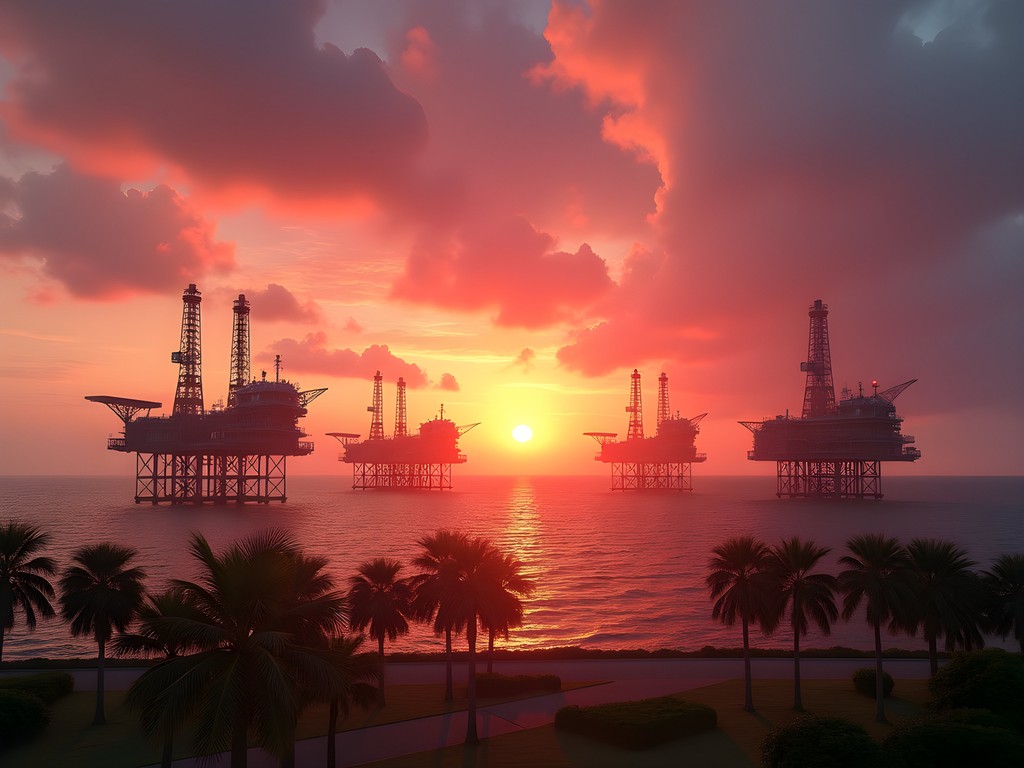
💡 Pro Tips
- Visit Silver Jubilee Park at sunrise for the best views of industrial structures against the morning light
- Bring a polarizing filter for your camera to cut glare when photographing metal structures against the water
- Ask permission before photographing workers or industrial sites—some areas have security restrictions
Finding Food Authenticity in a Company Town
Kuala Belait's status as an oil company town has created a unique food culture that reflects both local Bruneian traditions and the international influence of expatriate workers. The real food scene exists not in fancy restaurants but in simple kedai kopi (coffee shops) and night markets where oil workers, locals, and the occasional adventurous traveler converge.
My favorite discovery was Restoran Nur Wanita, a humble establishment run entirely by women who serve traditional Bruneian and Malay dishes. Their ambuyat—a starchy staple made from sago palm that you eat with a bamboo fork called a chandas—offers a truly local experience few tourists ever try. I've documented countless meals across four continents, and this ranks among the most authentic.
For night photography in these dimly lit food stalls, my mini tripod proved invaluable. Its flexible legs wrapped around railings and poles, allowing me to capture low-light food images without disturbing other diners.
KB's night market near the bus station comes alive after 6 PM, offering everything from grilled fish to kolo mee (noodles with minced meat). Bring small Brunei dollar notes and an empty stomach—the portions are generous and ridiculously affordable.
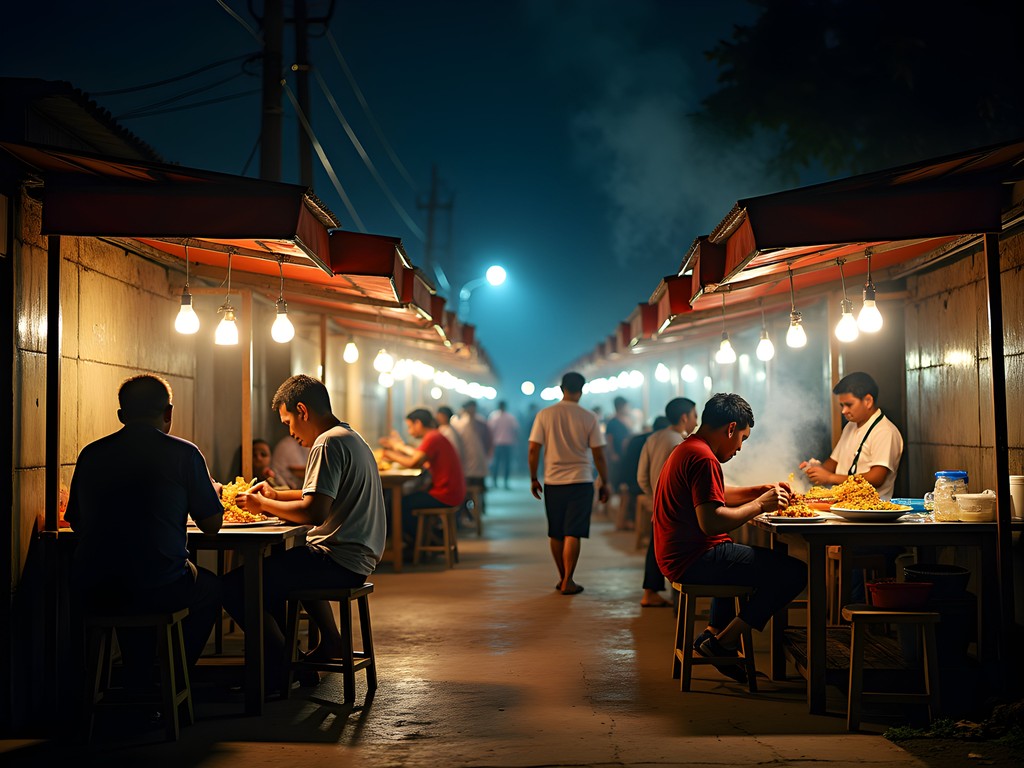
💡 Pro Tips
- Try ambuyat at least once, but be prepared for its unusual texture—it's an acquired taste
- Visit kedai kopi during morning hours (7-9am) when they're bustling with workers having breakfast
- Look for stalls with long local queues—they invariably serve the best food
Crossing Cultural Boundaries at the Borderlands
One of Kuala Belait's most fascinating features is its position just minutes from the Malaysian border. This proximity creates a cultural blending zone where Bruneian and Malaysian influences intermingle in architecture, language, and daily life.
I spent an afternoon exploring the border area, walking as close as permitted to the actual crossing point. The contrast between Brunei's oil wealth and Malaysia's more modest development is visible in the infrastructure, yet locals move between the two with casual familiarity—many Malaysians work in KB's petroleum industry while living across the border.
For this border exploration, I wore my quick-dry pants which proved perfect for the humid climate and occasional rain shower. Their hidden zippered pocket kept my passport secure during the journey.
The most revealing experience came from simply sitting at a coffee shop near the border and listening to conversations flowing seamlessly between Malay, English, and Chinese dialects. Here, I met Hassan, a petroleum engineer who invited me to join his family for dinner, where I learned more about daily life in KB than any guidebook could possibly contain.

💡 Pro Tips
- Respect border regulations and don't photograph official checkpoints or personnel
- Learn a few basic Malay phrases—locals appreciate the effort even if you're not fluent
- Visit on weekdays to observe the flow of cross-border workers that defines the region's economy
The Forgotten History of Seria Oil Field
Just a short drive from KB's center lies the Seria Oil Field, where Brunei's petroleum history began in 1929. While the country's wealth is now synonymous with the Sultan's opulence, the true story of Brunei's development lies in these oil fields and the communities that formed around them.
The Oil and Gas Discovery Centre offers context through exhibits, but I found more authentic connections by seeking out retired oil workers in local coffee shops. Armed with my pocket translator to help bridge language gaps, I collected stories that revealed how the industry transformed a sleepy fishing village into an industrial hub.
Most memorable was my encounter with Mr. Yong, who worked the fields for 42 years and now spends his days at a local kopitiam. His weathered hands traced invisible pipelines across the table as he described how Japanese forces destroyed the oil fields during World War II, and how workers rebuilt everything from scratch afterward.
For photographers, the nodding pumpjacks against the setting sun create striking silhouettes, reminiscent of the American plains oil fields I've photographed in North Dakota, yet with a distinctly Southeast Asian context. I recommend using a lens cleaning kit to protect your equipment from the combination of industrial particulates and coastal humidity that can quickly fog lenses.
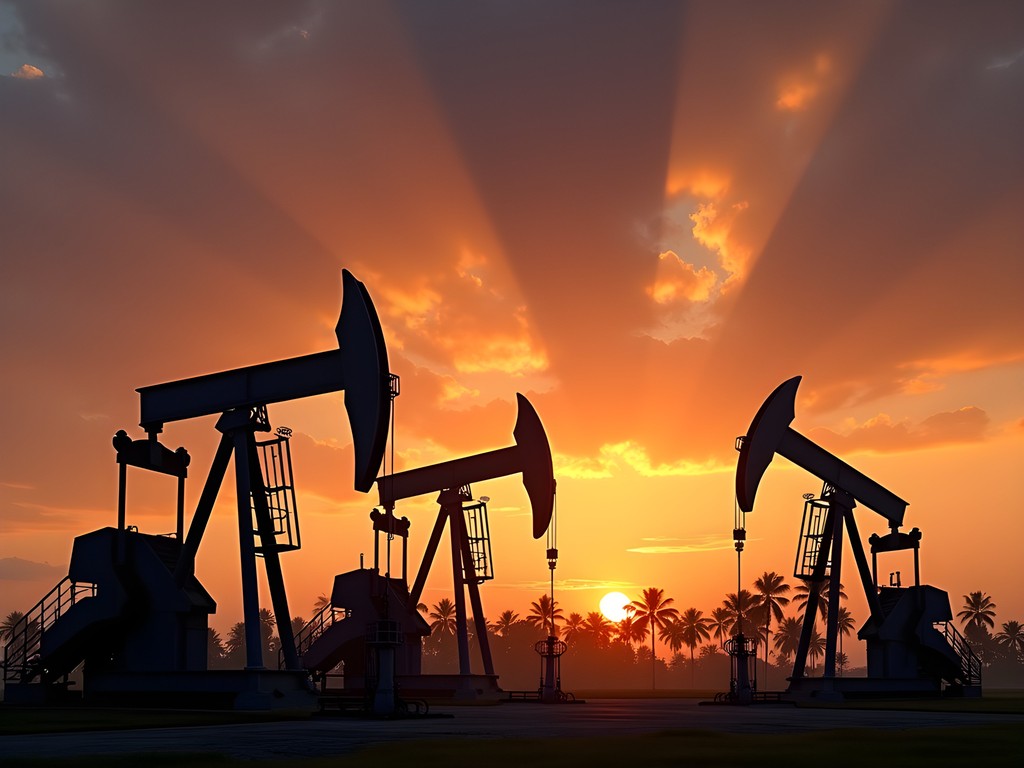
💡 Pro Tips
- Visit the Oil and Gas Discovery Centre early to avoid school groups
- Seek permission before entering any active industrial areas
- Bring older printed photos of oil fields if you have them—they make great conversation starters with retired workers
Final Thoughts
As my weekend in Kuala Belait drew to a close, I found myself sitting at the same coffee shop where my journey began, watching oil workers change shifts as fishing boats returned to harbor. KB won't make many 'must-visit' lists—and that's precisely its value. In a world where tourism increasingly means following influencers to the same photogenic spots, places like this offer something increasingly rare: an unfiltered glimpse into working landscapes where industry and everyday life coexist without pretense.
I've spent years seeking beauty in overlooked places, from Nebraska's Sandhills to Ireland's bog lands, and KB fits perfectly into this collection of honest landscapes. The town doesn't ask to be admired, doesn't dress itself up for visitors, yet rewards the patient observer with authentic connections and visual contrasts that tell a deeper story about Brunei than any palace tour.
If you're the kind of traveler who finds meaning in places others pass through, who seeks cultural authenticity over comfort, consider giving Kuala Belait a weekend of your time. You won't find luxury, but you'll discover something increasingly rare in our over-traveled world: a place that still belongs primarily to the people who live and work there, rather than to tourism.
✨ Key Takeaways
- Industrial landscapes offer unique photographic opportunities and cultural insights not found in traditional tourist destinations
- Authentic connections with locals are more likely in overlooked destinations where tourism hasn't created artificial experiences
- Border regions like KB provide fascinating glimpses into how neighboring cultures blend and influence each other
📋 Practical Information
Best Time to Visit
September-November (less rainfall, moderate temperatures)
Budget Estimate
$150-200 for a weekend (accommodations, food, local transport)
Recommended Duration
2-3 days
Difficulty Level
Challenging (Limited Tourist Infrastructure, Few English Speakers Outside Oil Industry)
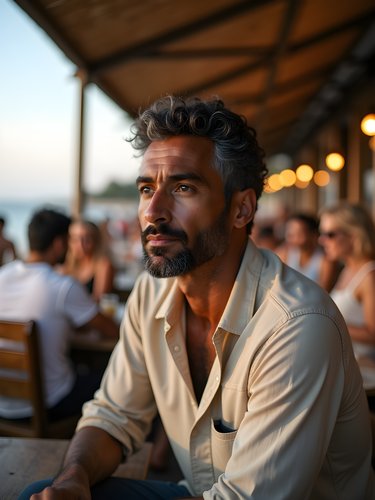
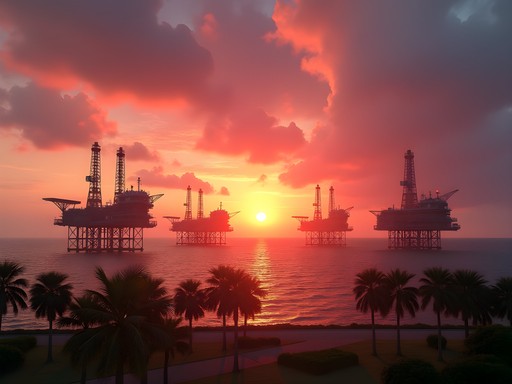
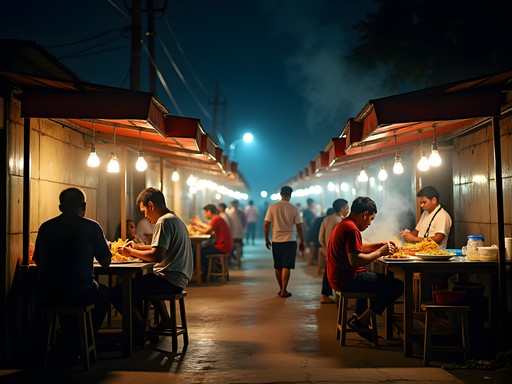
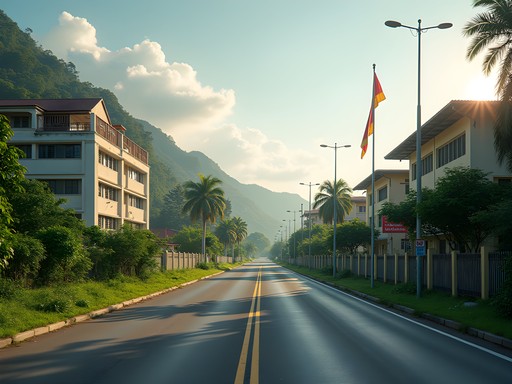











Comments
wanderlustclimber
Love how you found beauty in a place most travelers skip! Those sunset photos of the oil rigs are surprisingly gorgeous. Added this to my Brunei itinerary!
wildmate
Great post! I'm planning to visit Brunei next month and wondering about the border crossing to Miri that you mentioned. How complicated is the process? Did you need to get a separate visa for Malaysia or is it straightforward? Also, any food spots in KB that are absolute must-tries?
springfan
Not the author but I found the border crossing super easy! Just make sure your passport has enough empty pages. And don't miss the laksa at Mei Fong Cafe in KB - incredible!
Mason Ferrari
Taylor, this is precisely the kind of off-the-beaten-path content I appreciate. I visited Kuala Belait three years ago during my Southeast Asia industrial heritage tour and found similar reactions from locals when I expressed interest in the oil infrastructure. The juxtaposition of heavy industry against the tropical setting creates a fascinating visual narrative that most travelers miss. Did you manage to visit the Oil and Gas Discovery Centre in Seria? The exhibits on how petroleum extraction shaped Brunei's modern identity were surprisingly insightful. Your section on crossing cultural boundaries at the borderlands particularly resonated - that liminal space between Brunei and Malaysia holds so many stories. Well documented.
wanderlustclimber
Didn't know industrial heritage tourism was a thing! Cool perspective.
Mason Ferrari
Oh absolutely! Industrial sites tell us so much about a region's economic and social development. Worth exploring beyond the usual tourist attractions.
springfan
Finally someone writing about KB! I thought I was the only one who found those oil fields weirdly beautiful at sunset.
wildmate
Right? Industrial landscapes have their own kind of beauty. Did you check out the border area too?
springfan
Yeah! Walked over to Miri for lunch one day. The contrast between the two sides is fascinating.
Mason Sullivan
This is exactly the kind of off-the-beaten-path content I love! I explored Brunei a few years back but focused mainly on BSB and Ulu Temburong. Completely overlooked KB thinking it was just an industrial zone. Your perspective on finding beauty in these working landscapes is refreshing. I've found my best travel experiences often come from these overlooked places. Did you have any issues with photography near the industrial areas? I've sometimes encountered security concerns when photographing infrastructure in certain countries. I always carry my compact travel tripod for those industrial sunset shots - looks like it would've been perfect for this location!
Taylor James
Thanks Mason! I was careful about photography - stayed in public areas and viewpoints for the industrial shots. There are actually designated photo spots at some of the lookout points where they expect visitors. A tripod would definitely have helped with those sunset shots!
roamclimber
Just got back from Brunei and wish I'd seen this post before going! Spent all my time in BSB but this looks way more interesting. Love how you found beauty in a place most travelers skip. Those sunset photos with the rigs silhouetted against the sky are incredible. Next time I'm definitely venturing to KB!
smartfan
I visited Brunei last year but completely missed Kuala Belait! Stuck to the main tourist spots in BSB instead. Kinda regretting it now after reading this. The food scene sounds amazing - especially that mix of Malaysian, Bruneian and expat influences. Might have to plan another trip!
Taylor James
It's definitely worth a return trip! Most tourists skip KB, which is exactly what makes it special. The food scene alone is worth the journey.
roamgal
Those sunset photos with the oil rigs are stunning! Never thought industrial stuff could look so beautiful!
skystar
Great post! How many days would you recommend staying in KB to really experience it properly? Is accommodation easy to find?
skyway
FINALLY someone writes about industrial tourism in Southeast Asia!!! I'm obsessed with visiting working industrial sites and everyone thinks I'm weird. This post validates my travel choices! The mix of cultures you described at the border town sounds amazing too. Did you try the local coffee? I heard they have a unique way of brewing it there with condensed milk and some kind of local spice?
Taylor James
You're definitely not weird! Industrial tourism shows how places actually function. And yes, try the 'kopi susu' with cardamom - it's incredible!
Venture X
Premium card with 2X miles, $300 travel credit, Priority Pass